4 Trans Women Share How Facial Feminization Surgery Changed Their Lives

Martin Salgo
Whether it be cosmetic, corrective, or affirming, there are a lot of reasons a person might choose to get plastic surgery (by the way, “because I want to” is a perfectly good one), and facial feminization procedures are no different. But we all have the same goal: to see our truest selves reflected in the mirror.
For people who struggle with their gender identity, or don't feel like their reflection represents the person they are inside, mirrors can be especially hard to face. “Mirrors have always been my enemy,” says Caragh,* a transgender woman. “Seeing my reflection was like sticking my arm in a bear trap. Nothing good was going to come of it.”
In June 2023, after years of building up her courage, Caragh decided to undergo facial feminization surgery (FFS). FFS is an umbrella term for various personalized procedures that feminize facial features. It includes noninvasive treatments, such as filler and Botox to help contour, and surgical procedures, such as hairline lowering or brow-bone shaving, explains Michelle Lee, MD, a board-certified plastic surgeon in Beverly Hills.
Every FFS plan is carefully tailored to each person. For Arisce Wanzer, a transgender model and host (and a patient of Dr. Lee), facial feminization surgery meant getting Botox in her masseter muscles to soften her jawline and a nose job. “I didn’t know what I was doing was facial feminization surgery,” says Wanzer. “It’s different for everybody.”
For Caragh, FFS included hairline lowering, a brow bone shave, rhinoplasty, fat implants in her cheeks, and an upper-lip lift. She was nervous about the procedures, recovery, and the result, but she figured she had two options: “I could die hating the image I presented to the world or live loving a feminine face,” she says. “It was an obvious choice, even for a fearful transitioner such as myself.”
Getting FFS—or any medical procedure—is not a required part of transitioning, but many women find that it brings them joy, confidence, and a feeling of greater safety. To learn more about facial feminization surgery, how it works, and what to expect, we turned to the experts: plastic surgeons and four transgender women, including Caragh and Wanzer, who have been there, done that.
In this story:
Meet the experts:
Michelle Lee, MD, is a board-certified plastic surgeon in Beverly Hills.
Jordan Deschamps-Braly, MD, is a board-certified plastic surgeon in San Francisco.
Jennifer Levine, MD, is a double board-certified facial plastic surgeon in New York City.
What is facial feminization surgery?
Facial feminization surgery is a blanket term used to describe a series of cosmetic procedures that create a more feminine appearance. Says Dr. Lee, “It’s one aspect of a male-to-female (MTF) transition.”
These procedures are “well orchestrated and executed to create a beautifully balanced, affirming, often life-changing outcome,” says Jordan Deschamps-Braly, MD, a board-certified plastic surgeon in San Francisco. FFS can encompass everything from filler and Botox to more invasive treatments, such as liposuction or fat grafting to contour the face. Procedures can include:
Scalp advancement (or hairline lowering)
Forehead contouring (or a brow bone shave)
Brow lift
Rhinoplasty (or nose reshaping)
Jaw contouring
Genioplasty (or chin reduction and/or contouring)
Masseter muscle reduction (the muscles that run from the cheekbones to the lower jaw)
Fat grafting
Lip lift
Canthopexy (or eyelid tightening)
Face and neck liposuction
Tracheal shave
Otoplasty (or ear pinning or reduction)
“These provide the basis for FFS,” says Dr. Deschamps-Braly, “but we can also perform cosmetic procedures like a facelift and neck lift to complete the gender-affirmation plan.”
It’s unlikely that one patient would need or want every procedure under the FFS umbrella. A treatment plan “depends on the individual’s specific goals and anatomy,” says Dr. Lee. “Sometimes a single procedure, like rhinoplasty, can help a patient achieve the feminine appearance they desire, while other patients may require a suite of procedures.”
Depending on the combination of procedures, facial feminization surgery can happen in one operation. Dr. Deschamps-Braly says he will try to keep it that way. “This allows for a single recovery period,” he explains, “a single time under general anesthesia, and a very profound outcome for the patient so they can get on with their lives.”
How can patients prepare for FFS?
“As with any elective procedure, preparation is key,” says Dr. Lee. This is especially true when it comes to gender-affirming surgery. “Patients need to be mentally and physically ready to undergo such procedures and have support for post-operative care,” says Jennifer Levine, MD, a double board-certified facial plastic surgeon in New York City. “Being in good physical condition before a surgery allows the body to heal quicker because the body is in a healthier state.”
Dr. Lee says this means being in good physical shape and abstaining from habits that can cause complications or become a detriment to the recovery process, such as smoking nicotine or drinking alcohol. “Preparing for surgery is like preparing for a marathon,” she adds. “Customizing your diet to incorporate specific nutrients before and after your procedure is critical for achieving optimal surgical results.” Before any kind of surgical procedure, Dr. Lee recommends avoiding processed foods, drinking plenty of water each day, and discontinuing any dietary supplements, as some can exacerbate bruising.
“I’d advise anyone about to get FFS to spend the months beforehand exercising as much as they can,” says Caragh. “I was up and walking within a couple of hours of my FFS,” a feat she says was made easier because she was in decent shape.
Her doctor, Dr. Deschamps-Braly, agrees, saying his patients are usually up and walking the same day of surgery, and walking a significant amount in the days after: “This is helpful for the healing process.”
But Dr. Levine warns patients not to overdo it (if you’ve never done CrossFit, the week before your surgery is not the time to start). “It’s important to not put too much stress on the body before surgery,” she notes. “This can actually increase inflammation and cortisol levels.” When in doubt, she says, “follow your doctor’s instructions.”
And mental preparation is just as important as the physical. “I think the surgery should be something patients have been thinking about for some time,” Dr. Deschamps-Braly says.
“They’re mentally and physically prepared for it and are able to stand steadfast in their decision, their outcomes, and presenting their true gender,” Dr. Lee echoes this, noting that “your mind is so powerful in dictating the type of recovery you have.”
Dr. Deschamps-Braly says his patients usually come to him with a diagnosis of gender dysphoria made by a mental health professional. In most cases, they’ve been working with an endocrinologist or primary-care doctor to manage hormone therapy.
What is the recovery time for FFS?
“Generally, patients will be up and walking the same day of surgery,” says Dr. Deschamps-Braly. “Patients will look just fine going to the grocery store about 7 to 10 days after their operation, and they’ll be eating and breathing normally by two weeks.”
After two or three months of recovery, patients will start to notice some of the anticipated changes from their FFS—enough to attend an event where “looking good is important,” he says—but a full recovery can take up to 18 months. “Don’t let that discourage you,” he notes. “Patients generally look really good between three and six months after their procedure.”
What are the risks of FFS?
Every cosmetic procedure comes with a list of potential risks and complications, including:
Bleeding
Infection
Poor wound healing
Scarring
Nerve damage
Physical complications aside, our experts agree that the biggest risk of facial feminization surgery is not loving the outcome. “This is why it’s crucial that the patient and surgeon are on the same page and that everyone has realistic expectations,” says Dr. Lee.
When Wanzer approached Dr. Lee about rhinoplasty, she admitted that she was terrified of not liking the result. “What if I don’t like my nose?” she asked. “I’m not someone who can go under the knife and come back as a different person. I still want to look like myself, I still want to look Black.” Wanzer was reassured, she says, by Dr. Lee’s willingness to listen to her concerns and together they came up with a plan.
Across the board, the best way to mitigate the risk of not loving the final result is to find the right doctor. Says Wanzer, “Listen to your doctor when they talk about options. And if they only give you one option, they might not be the doctor for you.”
How to find a surgeon for facial feminization surgery
“When you’re choosing a surgeon, look at their previous work to get an idea of their style,” says Brooke*, a patient of Dr. Deschamps-Braly who underwent FFS in 2021. “There’s an artistry to the process and each surgeon has a different ‘look.’” It’s important to find a surgeon whose style aligns with your aesthetic goals.
Dr. Levine agrees: “The most important research you can do is to ensure that you and your doctor have the same aesthetic goals,” she says. “FFS typically involves a more drastic change in appearance. Being on the same page as your doctor about the expected appearance desired post-operatively is key.”
Beyond that, Dr. Deschamps-Braly encourages patients to find providers who are specifically trained and experienced in FFS. “There is an ever-increasing number of physicians who are suddenly offering facial feminization surgery…without any real training,” he warns.
What is the average cost of facial feminization surgery?
The total cost of any facial feminization surgery plan depends on the provider and the number of procedures involved. Says Dr. Lee, “It can range from a couple of hundred dollars for noninvasive procedures [such as filler and Botox] to $20K and up for surgical procedures.”
“The cost involved will depend on who is doing the operation, their experience, the city, and the environment they’re operating in,” Dr. Deschamps-Braly explains further. “In our practice, it can range from $55K to $105K, depending on the range of procedures included.”
That’s a pretty hefty price tag, and because FFS is typically considered to be a cosmetic procedure, it’s usually not covered by insurance. “Some insurance companies provide some level of benefits to certain patients depending on what kind of plan they have,” Dr. Deschamps-Braly says. But he urges patients not to rely on that and to come prepared with financial resources.
Some LGBTQ+ nonprofit organizations, including Point of Pride and Genderbands, offer grants for gender-affirming surgeries to those who are eligible. Alternatively, patients may also be able to use a flexible spending account to help cover medical expenses or, when all else fails, a personal loan or credit card may be used to pay for a FFS procedure.
The cost is high, but patients who have had FFS generally agree that the results are priceless. “FFS surgery may have cost me more money than I make in six months,” says Caragh, “but I’d happily pay Dr. Deschamps-Braly every year for the rest of my life.”
“Why I got facial feminization surgery”
People get facial feminization surgery to be perceived the way they want to be. For transgender women, FFS can offer the added benefit of increased feelings of safety and acceptance in a world that can be very unkind to the LGBTQ+ community. Caragh, Wanzer, Brooke, and Billie Grace,* all of whom underwent facial feminization surgery, tell us more about their experiences.
Caragh
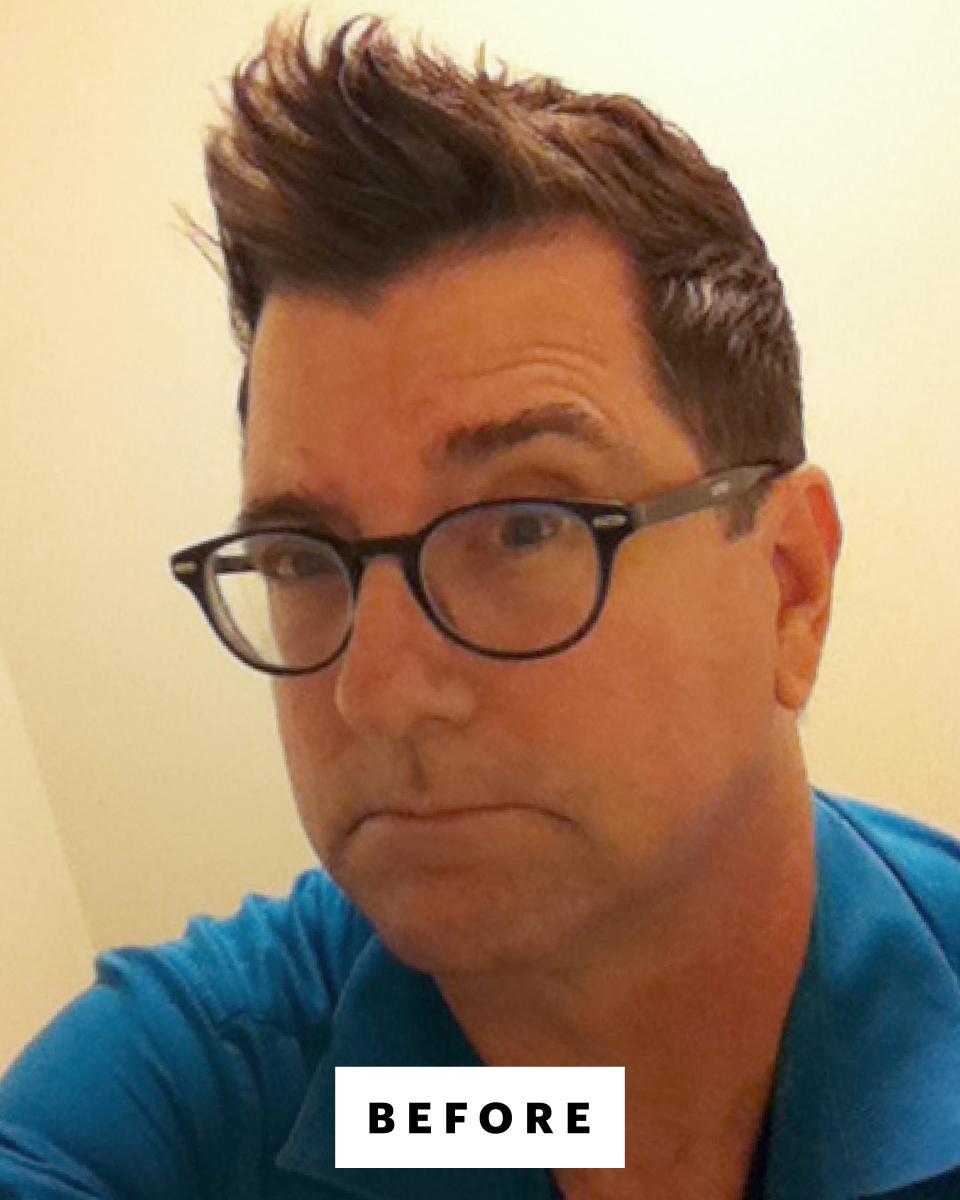
Caragh before facial feminization surgery.jpg
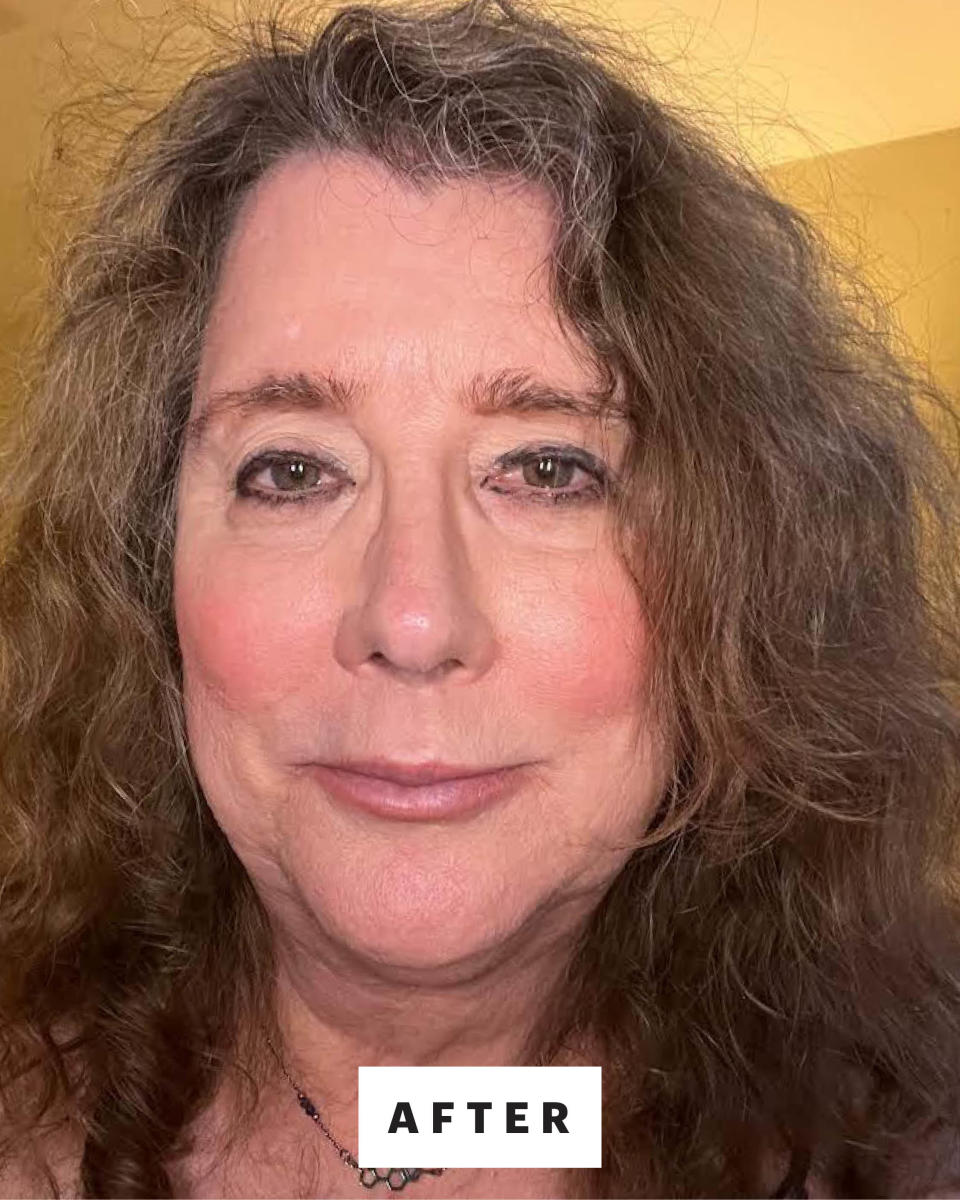
FFS helped Caragh find joy in her appearance. “I used to dread showing my face in public because it was so not how I wanted to be seen,” she recalls. “Now I love going out in public. I crave being social. For the first time in my life, I want to walk proudly out in the world every day, which makes everything I do in life better.”
What was the hardest part of the process?
Caragh spent the weeks leading up to her operation trying to desensitize herself to the pain she was certain would be ahead. “The anticipation of how bad it would be was truly the hardest part of the process,” she says. “Well, that and the intense fear that the process wouldn’t work and I’d never find the confidence a nice face would give me.”
What was aftercare like?
Surgery day wasn’t exactly a walk in the park, “but the pain meds made it far less agonizing than I worried it would be,” Caragh says. “I never experienced a minute of crippling pain.”
She found emotional support in the form of friends—yes, the TV show, but especially real-life companions. “They made sure I was following my medication routine and that I wouldn’t get depressed seeing bandages all over my face,” she says. “You need that emotional support throughout every step of your transition, but especially while you’re lying in bed, in pain. I don’t think I could have made it through without my friends.”
Caragh is still eagerly waiting to see the full results of her new face emerge. “For the first several months you feel like nothing has changed,” she says. “But I’m realizing that there is no time limit on recovery—you’ll just keep getting better every day.”
Arisce Wanzer
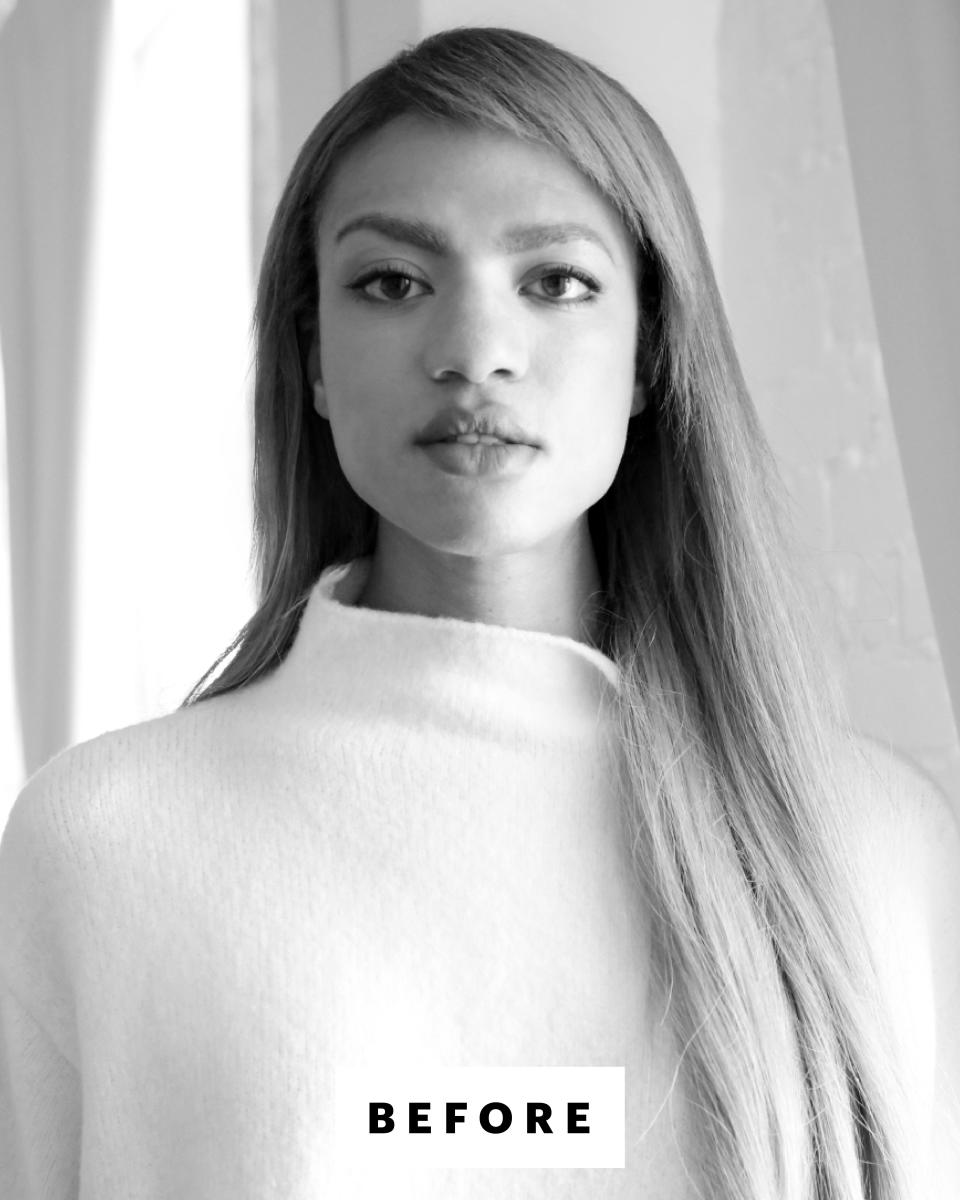
Arisce before facial feminization surgery.jpg

Arisce after facial feminization surgery.jpg
For Wanzer, who loved the way she looked, FFS was primarily a business decision. “I’ve been a model for 20 years, and I already liked the way I looked,” she says. “My old nose has been in Vogue six times. I knew how to work my angles.” But she wanted to book more beauty campaigns. For that she felt she needed to make a change “to meet this beauty standard that’s been set by this industry that has been around for 100 years.” She wanted to be able to look at the camera head-on, without leaning on angles. “Now I can. I have booked several beauty campaigns since getting it done,” she says. “I didn’t do anything cisgender people don’t do all the time.”
What was aftercare like?
Wanzer was on stage hosting an event just six days after her procedure, but she doesn’t necessarily recommend that. “I had a paid gig—I was not missing it—but I was just standing on stage,” she says, laughing. “I wasn’t doing the most.” She says a strict low-sodium diet and pineapple juice (“I was drinking nothing but pineapple juice!”) helped minimize swelling and quickly got her back on her feet.
“Salt can cause water retention,” confirms Dr. Lee, who treated Wanzer. “A low-salt diet can help reduce fluid retention and minimize swelling, and pineapple juice has long been used as a natural remedy for swelling. It’s rich in bromelain, an enzyme that has been shown in studies to alleviate pain and reduce swelling.”
Wanzer’s ultrafast recovery may not be the norm, but she pulled out every trick up her supermodel sleeve to get back on her feet in record time. “Arisce had an exceptional recovery because she cut out all sodium, focused on staying hydrated, and ate a nutritionally dense diet,” says Dr. Lee.
Says Wanzer, “It’s just beauty advice.”
Was facial feminization worth it?
“It was absolutely worth it. My life has improved because I’m getting what I wanted,” she says. “I wanted beauty campaigns and I wanted to look at the camera head-on and not have to work angles. The proof is in the pictures.”
Brooke

Brooke before facial feminization surgery.jpg
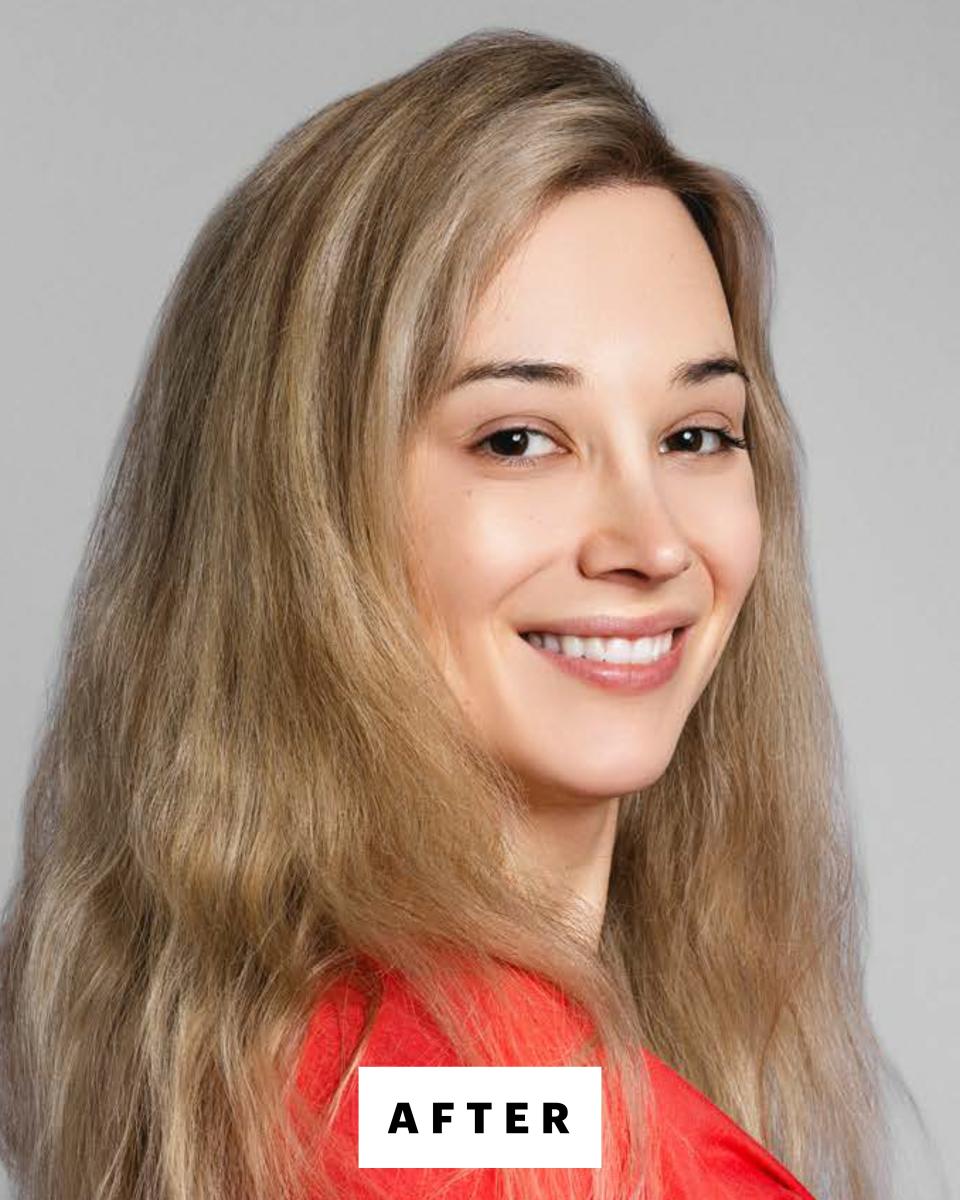
Brooke after facial feminization surgery.jpg
Brooke was motivated to get FFS to improve her relationships. “I wanted to recognize myself in the mirror,” she says. “The strain was making me an awful person. I was too wrapped up in my own pain to show love to my partner, family, and friends. In some ways, I did it for them.”
She was also deeply concerned for her safety and knew FFS would help. “I wept at my dream of walking to the grocery store and back without ‘getting clocked.’ The world isn’t kind to feminine men. My boyfriend used to wait for me outside of gas station bathrooms just in case I screamed.”
What was aftercare like?
In 2021, Brooke had her surgery, a five-hour operation consisting of brow bone reconstruction, rhinoplasty, hairline advancement, chin narrowing, jawbone reduction, and orbital rim contouring (which involves “[grinding] down the extra bone around my eye sockets,” she explains). “I woke up in a recovery ward with drain tubes snaking out of my temples and mouth,” she recalls. “A plaster cast ran from my forehead to my nose.” She spent her first night post-FFS managing pain and swelling, “but toward morning, I could stand and make a few triumphant trips down the hall,” she says.
In the days that followed, Brooke says, “My face looked and felt like a balloon that was about to pop and I couldn’t fully seal my lips.” Because of the pandemic shutdown, she was able to do her daily walks (which she believes were an important part of recovery) without many onlookers.
She also says her FFS experience taught her the difference between pain, which we choose, and suffering, which chooses us. “Compared to the suffering of presenting as male,” Brooke says, “I was euphoric that somewhere under my surgical dressings I was finally getting better.”
Was facial feminization worth it?
For Brooke, FFS unlocked a world of femininity she felt she didn’t have access to before. “Now, I live in a completely different world where I enjoy all the boons and burdens of womanhood,” she says. “It’s more socially acceptable for women to be vulnerable with each other in ways that men aren’t. My compassion and vulnerability were ridiculed in ‘dude culture.’ Now, they’re treated as laudable characteristics.”
Everything feels easier now that she doesn’t have to fight so hard to simply exist, Brooke says, but she knows that being a woman comes with its own set of hardships. “People are way more interested in watching me play video games on Twitch, but no one assumes that I’m intelligent,” she says. “Tech companies are more likely to offer me a position managing their social media account than writing software.”
Billie Grace
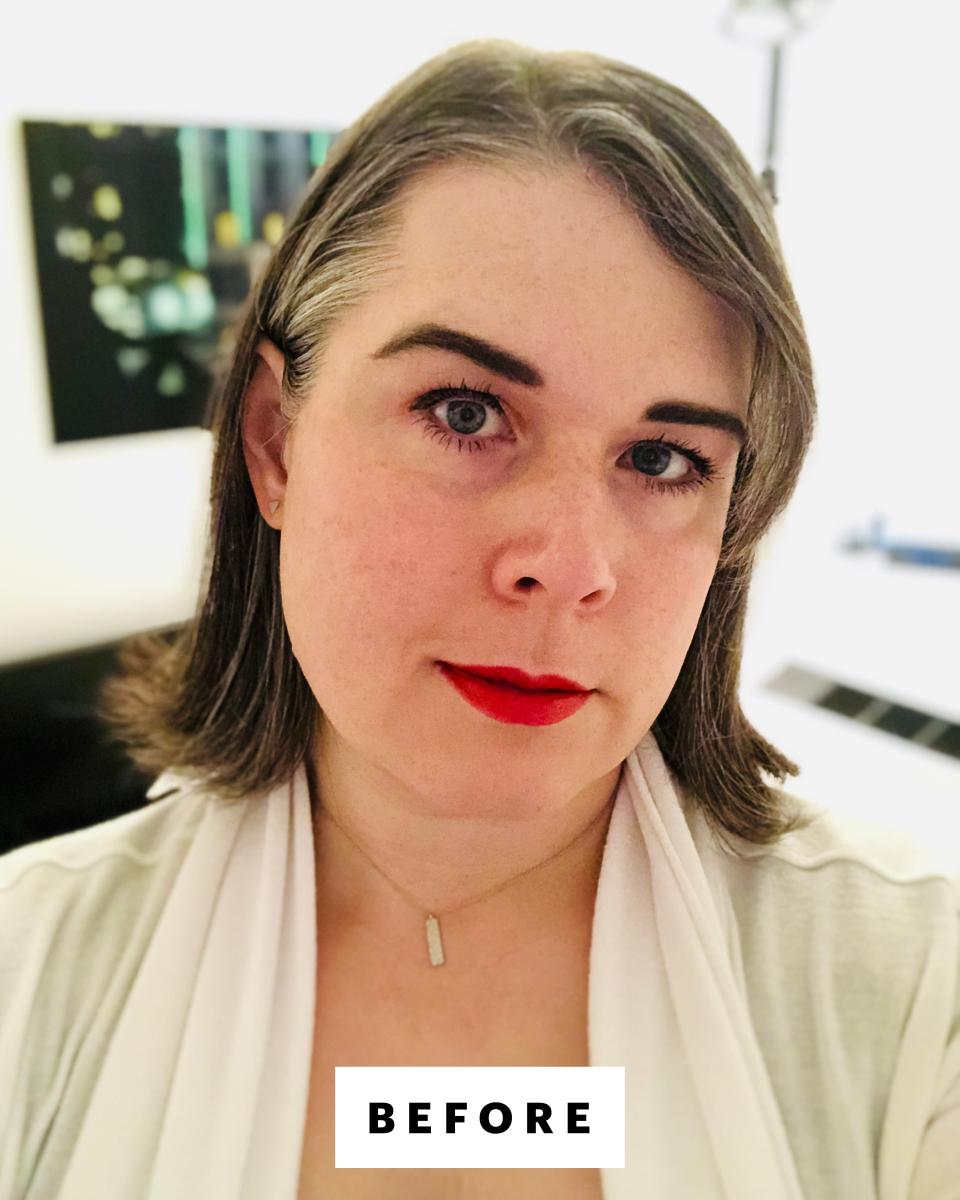
Billie Grace before facial feminization surgery..jpg

Billie Grace after facial feminization surgery.jpg
For Billie Grace, another of Dr. Deschamps-Braly’s patients, facial feminization surgery was necessary for her safety. “I was ashamed of my looks and felt unsafe outside of New York,” she says. “Getting FFS was as much a matter of survival as it was confidence. Visiting my parents in the red South, dating, and even interviewing for work was filled with such anxiety and fear. I avoided all of it unless I had no choice.”
What was aftercare like?
For Billie Grace, who had what she describes as a marathon surgical session in the summer of 2020, recovery was spent alone in a hotel room, grappling with huge personal change and a pandemic. “The first night was surreal and a bit scary,” she recalls. “Because of the nose job, I couldn’t breathe properly. And I thought I’d suffocate in my sleep because my lips had grown so big.”
Fortunately, that initial major swelling didn’t last long (Billie Grace jokes that she’s since paid a lot of money to get lips so luscious), and the pain was very manageable. “In the beginning, you’re on painkillers,” she says. “Frankly, I’ve had more discomfort from arm days at the gym.”
After two months of healing in relative solitude, she was ready to debut her new face for her friends and family, “at a socially safe distance, of course.” By the time she was expected to return to working in the office, “I was a completely new person,” she says.
Was facial feminization worth it?
“Absolutely,” says Billie Grace. Just one year after FFS, she went from being single for eight years to being in a long-term relationship. She started modeling in the alternative scene where she’s been sought out by professional photographers in the US and Europe. “And I no longer fear traveling to see family because I fit in,” she says. “I look like any other woman.”
At the end of the day, “regardless of how you choose to present yourself in the future, you’re going to look amazing,” says Billie Grace. “FFS is totally worth it for the incredible quality of life it supports.”
*At the patient’s request, we are using only her first name to protect her privacy.
Read more stories about beauty and gender expression:
Why Is It So Hard for Top Surgery Patients to Find Good Aftercare?
Alok Vaid-Menon Wants to Degender Beauty. Will You Help Them?
Now, watch Benito Skinner react to TikTok trends:
Originally Appeared on Allure


